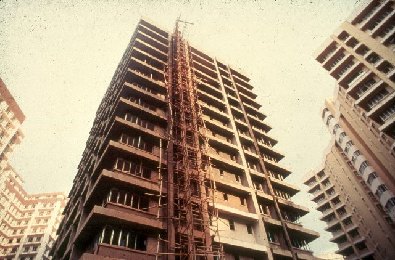Shot reverse shot: this method is when a conversation is filmed from one characters point of view to the others then the first characters again, this represents the movement of the different characters.
This short clip shows Patrick and Denise having a conversation from each others point of view from 0:06 to 0:45
Cutaway: This is a shot which is reframed to present information that was previously outside the cameras view which often reveals something that was not as obvious before.
This is a cutaway image of Archie and the pub which has been edited so that only Archie is seen in the shot and the pub in the mise en scene.

slow motion: This is when a footage is slowed down to emphasise what is going on and looks at things in more detail.
slow motion: This is when a footage is slowed down to emphasise what is going on and looks at things in more detail.
Extreme Close up: A close up shot is a shot which fills the entire camera frame and signifies the detail used by zooming in so much.

Long Shot: A long shot is used to get all of a persons body in and includes all the details it shows the head at the top of the frame and the feet at the bottom it also shows the characters body language and all their reactions. it can also get all details of a scene in and emphasise on certain objects.

Two Shot: A two shot is a shot with two people in a frame and is usually used in two way conversations to focus on the people speaking and their reactions and facial expressions as well as body language it also focuses on the two people in the shot.

Aerial Shot: An aerial shot is a shot taken from high above like a helicopter, it is usually used at the beginning of a film or TV drama. Eastenders starts with an extreme close up of The Thames and zooms out in to an aerial shot of London and shows really clear detail of all the landmarks and building and the shape of the river.
Low Angle Shots: Low angle shots show a view of something from low down which makes it look like the object or person is towering over the audience and makes the audience seem really little or can make the characters or objects look really big.

Canted Angle: This is when the camera is tilted to show imbalance and instability. these shots are often filmed by hand held cameras and are usually used in point of view shots.

Over The Shoulder: Shot: this shot focuses on someone speaking and focuses on one characters point of view as well as showing the shoulder or the back of the other character.
Pan: this is when the camera turns horizontally from a fixed position around the scene slowly and steadily which shows details and lets the character know what is happening. but it can also be a fast shot if there is adrenaline or its a shot where there is a lot of action and fast moving objects.
Rule of Thirds: This is a technique in camera framing where the camera is divided into sections to create reference points.
Diagetic Sound: This includes sounds that are meant to be heard by the characters like their voices and birds singing as well as music from headphones and stereos that are being played.
Voiceover: This is a narrator commenting on what is happening in the footage but is not actually a character in the scene.
Here is a short advert that includes a voiceover who explains what is happening the whole way through
Mid Shot: This is a shot that only shows the half a characters body, this is used a lot in TV dramas to concentrate on a characters body language and facial expressions and it also allows space in the frame for the mise en scene.
How much work have YOU done on your blog today Sanan?? It looks fantastic.. can't believe the research you've got through already..
ReplyDeleteOutstanding!!